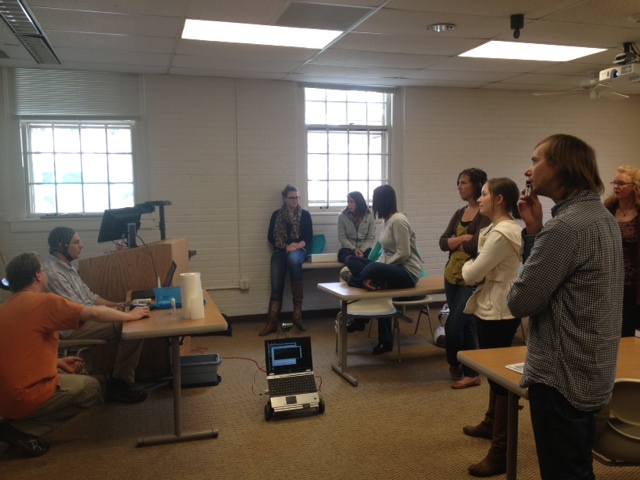You are here
Controlling a Mobile Robot
Operating a mobile robot using a BCI is a great exercise for a number of reasons. First, the ability to reliably control a robot demonstrates the real-time effectiveness a BCI system. Controlling a simple robot is also a good first step to operating more sophisticated assistive devices. For example, one should certainly be able to control a small mobile robot before attempting to drive an electric wheelchair. Robots also offer many opportunities for developing hybrid control. If a robot is able to supplement the instructions it is given with intelligent decisions, it may function much more reliably. For example, a robot can avoid walls and other obstacles or move toward objects of interest even if it was not specifically instructed to do so. Finally, driving robots is just plain fun and cool!
At the CSU Brain-Computer Interfaces Laboratory, we are currently developing modules for our CEBL3 BCI system to control the ER1 robotics platform and potentially other robots later on. Our first prototype uses a circular "pie-menu" P300 style interface to control the robot by allowing the operator to select from six different choices that turn and move the robot various amounts. Soon, we hope to develop modules for controlling the ER1 using a asynchronous BCI.
Here is a video of Tomojit Ghosh driving the ER1 robot using the p300bot page in CEBL3 in April 2014.
Here is a picture of Elliott Forney and Doug Hains driving our ER1 robot with a serial P300 speller interface for a course on Assistive Technology in the Department of Occupational Therapy at CSU on April 11, 2013.

